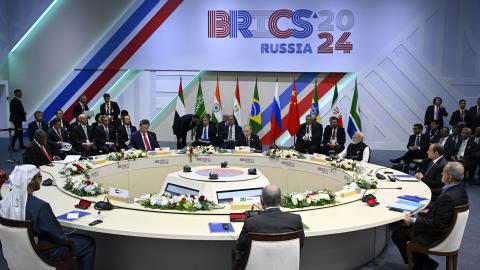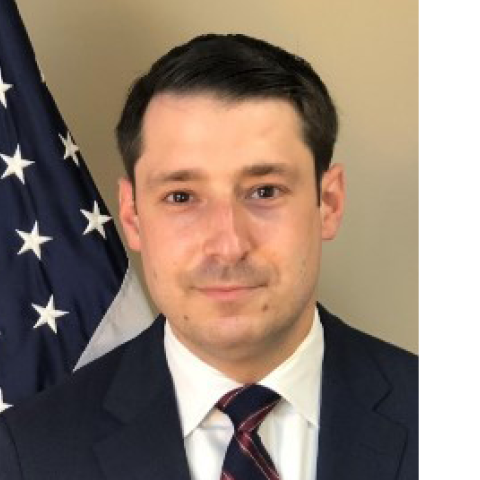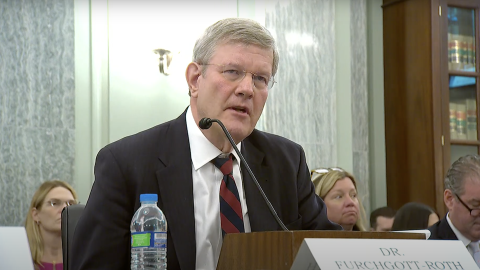Before the Senate Committee on Commerce, Science, and Transportation, Harold Furchtgott-Roth testifies about the need for a unified spectrum policy to ensure American national security.
Written Testimony
Introduction
Chair Cantwell, Ranking Member Cruz, and Members of the Senate Commerce Committee, thank you for inviting me to testify before you today.
Today’s hearing is about the relationship between federal spectrum policy and American national security. Some observers view national security concerns involving spectrum and commercial interests in spectrum as a zero-sum game: focusing on one of these priorities is to detriment the other. I disagree. I see the two as complementary: attending to national security concerns protects commercial interests in spectrum and robust commercial development of spectrum promotes American national security.
For much of the past century, America has been the global leader in enabling new and innovative wireless services. Communications lawyers and policy practitioners call this spectrum policy. Most Americans are unfamiliar with the concept; they simply know that their smartphones and other mobile devices work. And they trust that our government can keep us safe from new wireless military technologies, such as the types of drones that are currently being used in the wars in Ukraine and in Gaza.
American consumer electronic devices work because American policy decisions enable them to work. From competitive auctions for FCC licenses; to the development of unlicensed applications like Wi-Fi and Bluetooth; to the competitive market for private wireless providers; to new forms of wireless communications like 3G, 4G LTE, and now 5G; and to innovative new satellite services, America has led. Meanwhile, the rest of the world has followed.
Sadly, American leadership in wireless technologies is now challenged not just from competitors abroad, but also from paralyzed domestic policy. The unthinkable has happened: the FCC’s legal authority to hold auctions has lapsed; no new bands of federal spectrum to transfer to the commercial sector for licensed or unlicensed purposes are to be found; and coordination between the various branches of government on spectrum policy is absent. The end result? American leadership in international spectrum coordination wanes. Our global competitors speed ahead. American consumers are left behind. And our nation’s ability to be nimble in the midst of new forms of wireless warfare is potentially compromised.
Today I will compare the success of America’s historical spectrum policy with today’s comparatively weak spectrum policy and discuss the hazards this presents for American national security. I will also discuss the Spectrum Pipeline Act of 2024, a bill that will move America in 2 the right direction on spectrum policy, as well as best practices for spectrum policy going forward.
I. Qualifications
I am Senior Fellow and Director of the Center for the Economics of the Internet at the Hudson Institute. I am also president of an economic consulting firm, Furchtgott-Roth Economic Enterprises. Additionally, I am an adjunct professor at Brooklyn Law School, where I teach communications law, as well as at the University of Baltimore Law School, where I teach law and economics.
From 1997 to 2001, I served as a Commissioner of the Federal Communications Commission, having been nominated by President Clinton and confirmed unanimously by the Senate. Previously, I was chief economist of the House Commerce Committee where, among other responsibilities, I worked on legislation that became the Telecommunications Act of 1996. After I left the FCC, I served for eight years on the Spectrum Advisory Committee to the Department of Commerce.
I have in the past also served the federal government on national security topics. I served on a federal advisory committee on telecommunications for the National Security Agency. I was a research analyst at the Center for the Naval Analyses, a think tank for the Navy. Early in my career, I was an analyst in the National Security Division of the Congressional Budget Office and an intern in the National Security Division of the Office of Management and Budget. I received a Ph.D. in economics from Stanford University and an S.B. in economics from the Massachusetts Institute of Technology.
I have authored or coauthored four books and hundreds of reports and articles, many related to spectrum and national security. Together with my Hudson colleague Kirk Arner, I am currently writing a textbook on communications law informed with an economic perspective.
II. 19th Century Spectrum Policy
Early development of spectrum in the middle and late 19th century was heavily focused on military applications. The U.S. Army helped develop overland wireless telegraphy, and the U.S. Navy in particular developed wireless telegraphy for communications between ships as well as between ships and land. At international conferences on spectrum in the late 19th and early 20th century, military interests in spectrum policy largely dominated the position of the U.S. government.
For a century and half, the U.S. military has helped train generations of wireless engineers and technicians, as well as developed and adopted countless new wireless technologies. During that time, American wireless military technologies have been at least comparable to, and often better than, those of our adversaries.
III. 1934-2009: American Leadership in Commercial Wireless Technology and Spectrum Policy
For the 75 years between 1934 and 2009, the United States was unquestionably at the forefront of commercial spectrum policy due to its focus on private interests and competing commercial services rather than purely government ownership, which was a position that dominated in most other countries. U.S. commercial spectrum policy was heavy-handed and far from perfect during much of this period, but it nevertheless tended to be more market-oriented than those of other countries. The end result was to the benefit of the United States and the entire world.
To that end, one of the most successful economic policies in the last few decades has been the use of competitive auctions to transfer spectrum from federal use to private use. In 1927, the federal government claimed exclusive right to all wireless spectrum. Between 1934 and 1994, the FCC would take small blocks of wireless spectrum and assign new licenses to political friends or to lottery winners who could game the system. Such assignments, today referred to as “beauty pageants,” took years, and the results do not make for a good civics lesson.
Around 1960, Ronald Coase, a future economics Nobel Laureate, proposed assigning FCC licenses through an auction. At the time, Professor Coase was denounced as a crackpot by politicians, but over time, Coase’s wisdom emerged. In 1994, Congress granted the FCC temporary auction authority.
Over the next 30 years, large swaths of federal spectrum have efficiently been transferred to commercial licensees. And until the past few years, Congress has routinely extended temporary auction authority every few years.
While the U.S. Treasury has collected hundreds of billions of dollars in auction receipts, the far bigger winner has been the American consumer who today enjoys wireless devices and networks, the existence of which would have been impossible under 1994 spectrum allocations. Imitation is the sincerest form of flattery, and nearly every country in the world has imitated American spectrum auction policy in subsequent years. Wireless services and the devices and software enabled by them, fostered in the United States, have done as much if not more than any other technology in human history to lift individuals out of poverty and provide opportunities for prosperity that would have otherwise been unimaginable.
American spectrum policy innovations existed beyond just auction authority. These include private broadcasting; commercial space services; competitive commercial mobile wireless services, including Generations 1.0 through 4.0 of mobile wireless broadband and accompanying innovative handset markets; Part 15 unlicensed spectrum and associated applications; and spectrum license secondary markets.
During this period, American national security was not adversely affected by spectrum policy. If anything, our national security was enhanced by a vibrant private sector of wireless technologies that helped develop and complement wireless military technologies. Competing demands for spectrum were rarely in conflict.
The end result of better spectrum policy was a profoundly successful U.S. commercial wireless industry. By my estimates, wireless services were a substantial engine for economic growth in the United States between 1990 and 2010. New wireless services spawned the creation and development of countless businesses in the United States. Some are the largest in the world; others are small businesses. As with any competitive market, some have succeeded and some have failed. But all competed to develop new technologies and new wireless services.
American consumers benefitted too. By my estimate, the consumer welfare value of commercial spectrum in the United States easily exceeds $10 trillion. Most of that value has been generated in the past 35 years.
Success in America generated imitation abroad. Other countries consciously emulated U.S. spectrum policy, creating independent regulatory agencies, allowing unlicensed devices, commencing spectrum auctions, and allowing competing commercial providers of wireless services. Even countries that remained avowedly “communist” all became implicitly “capitalist” with their embrace of commercial wireless competition. Other countries not only imitated the American commercial structure; they also uncharacteristically deferred to America in international fora such as the International Telecommunications Union and other technical standards-setting bodies.
Imitation may be the sincerest form of flattery. But in economics, imitation of a competitive market structure is a victory not to flatter America, but to benefit people around the world—particularly the poorest of the poor. Between 1987 and 2020, little more than a single generation, roughly a third of the world’s population escaped the lowest form of subsistence to a higher rung on the income ladder. And more than 2 billion people today have a higher standard of living than their parents, likely the greatest leap in human welfare in history. I attribute much of that improvement to the development of commercial wireless technologies. Commercial wireless technologies are novel in their ability to reach rich and poor alike. They affect the lives of everyone but particularly those whose hope is most fragile.
IV. The Last 15 Years of Spectrum Policy: America Loses its Edge
Over roughly the last 15 years, the United States has lost its edge in spectrum policy. Partly, other countries have caught up. And partly, America has stumbled. There are several reasons why.
First, because most other countries began allocating spectrum many decades after the United States, these countries have the advantage of not having vestiges of spectrum allocations that made technological sense decades ago but no longer make sense today. America is not so lucky.
Second, American spectrum policy has not been particularly innovative over the past 15 years. Of course, record amounts of spectrum have been transferred from the federal government to the FCC for auction. Additionally, new bands of spectrum have been reserved for unlicensed users. But the structure, and arguably the scale, of these developments were largely foreseeable in 2009. Worse yet, in the past few years, the executive branch has chosen not to make additional bands of federal spectrum available for transfer to the FCC. The process of how these decisions are made is remarkably opaque. Yet the end result remains: today, there is no pipeline of federal spectrum to transfer for commercial development.
Third, FCC spectrum-related decisions are slow, costly, and cumbersome. This often prevents spectrum from being available to entities that can most efficiently use it. This result is not necessarily different from the pre-2009 period, but it diminishes American competitiveness. The exact property rights for the use of spectrum by both licensed and unlicensed spectrum are not well-defined, and where defined, they are not predictably enforced. Routine license transfer approvals can be delayed with little explanation or reason. Non-routine license transfers are even more complicated, sometimes requiring concessions unrelated to the licenses at issue. Sharing and leasing arrangements are slightly easier than before, but they are not as common as they should be in efficient spectrum markets. Interference within band and across bands is all too common, with slow enforcement mechanisms. The concept of an efficient spectrum market in which spectrum is put to its highest valued use will remain elusive until property rights are better defined; contract and lease rights are predictably and expeditiously executed at minimal costs; and protections from interference are predictably, expeditiously, and costlessly enforced. In the absence of efficient spectrum markets, interested parties are left to plead with government officials for special consideration; this differs little from a command-and-control economy or the “beauty pageants” of a pre-auction FCC.
Fourth, no country has yet developed truly efficient spectrum markets, and the efficiency of spectrum markets in the United States, limited as it is, may yet be better than spectrum markets in other countries—but not all. Some countries, such as Korea, have strong executive administrations that can make expeditious decisions without the years of haggling that characterize American spectrum policy.
Fifth, in the past 10 years in particular, public disagreements between federal users—in particular, DoD users—on the one hand and commercial users on the other have emerged in several bands, including the L-Band, 3 GHz, C-Band, and 12 GHz. Other countries with militaries less focused on the wide array of technologies deployed by the U.S. have had fewer conflicts between government and private users.
Sixth, FCC spectrum auction authority, for the first time, ended for an extended period of time. Shockingly, most countries in the world likely have governments with authority to auction spectrum—except the United States. Also, recommendations from NTIA to the FCC on not reallocating certain spectrum that would interfere with national security-sensitive federal users were for the first time ignored. In an unseemly display, cabinet officials as private citizens have made public statements contradicting the positions of their agencies with regard to national security recommendations. And rather than coordinate exclusively through NTIA, some federal agencies in recent years communicate independently with the FCC. Consequently, rather than hear a single voice from the administration, the FCC sometimes hears multiple voices, not all with the same message.
Seventh, China complicated American spectrum policy 15 years ago by publicly proclaiming its intention to dominate 5G technology as a matter of official government policy.
Over the past 120 years, many centrally-planned economies have announced “5-year plans” and other ambitions to develop and to dominate various technologies. All have failed miserably, with China’s efforts in 5G as a notable exception.
Finally, the federal government does not have the means to assess the value of its spectrum holdings. No one knows how much they are worth. Could a private company approach the government and offer a large sum for a band of spectrum in a specific location either on a purchase or lease basis? No. By comparison, private parties can lease federal land for grazing or other purposes, but not spectrum. Conversely, could a federal agency approach a private company and offer a large sum for a band of spectrum in a specific location, either on a purchase or lease basis? No. We are very far from an efficient allocation of either federal or non-federal spectrum.
Perhaps the most visible manifestation of today’s weak American spectrum policy can be seen in the success of Huawei’s global network equipment sales. Despite widespread concerns in the intelligence communities of many countries, many of America’s closest allies have approved the purchase of Huawei and ZTE network equipment. Substantial evidence has been accumulated demonstrating surreptitious information collection by China and other adversaries via Huawei and ZTE network equipment. Part of the concern is espionage by hostile countries, and part of the concern is sabotage not only by nation states but also by terrorist groups sophisticated enough to hack into relatively unsecure Huawei and ZTE equipment. Not only do these decisions enhance the finances of Huawei and ZTE, but they also undermine the national security of the United States and our allies. Perhaps even worse, the standing of the United States in international fora has fallen. The United States is more isolated at the ITU and American companies are less successful in international standards-setting bodies today than they were in previous years.
In recent weeks, Americans have seen the harmful effects of wireless technologies controlled by our adversaries, including technologically unsophisticated ones. Attacks likely enhanced with wireless technologies killed American service members in the Middle East. Hostile drones frequently attack American ships in the Red Sea and the Gulf of Aden. When a wireless network suffers an outage in the United States, sabotage by our adversaries is immediately feared. Wireless networks have become frequent avenues for espionage and potentially for sabotage.
V. Administration and Congressional Efforts to Fix Spectrum Policy
Spectrum policy has never been a partisan issue, and therefore efforts to correct American spectrum policy should be bipartisan. Both the Biden administration and Congress recognize the weakness of American spectrum policy today. The administration has over the past several months introduced a “National Spectrum Strategy” that calls for a review of several bands of federal spectrum that might be transferred to the FCC for reallocation to the commercial sector, including licensed spectrum. The National Spectrum Strategy is a good start, but the proposed timelines to complete studies for the review of various bands of spectrum—for which countless studies have previously been completed—are much too delayed. And crucially, while the 7 Strategy calls for the studying of various bands for potential future use, it does not request the near-term teeing up a single speck of spectrum for federal auction.
Several bills have been introduced in Congress to remedy American spectrum policy, but I would like to recommend one in particular introduced by Senator Cruz together with Senator Thune and Senator Blackburn: the Spectrum Pipeline Act of 2024.
VI. The Spectrum Pipeline Act of 2024
This bill contains much-needed statutory language that would repair a recently broken system. Here are a few examples:
• Extending auction authority: The Act would extend auction authority generally for five years and for several more years for identifiable bands of spectrum. Of course, one day, Congress ought to extend it permanently.
• Identifying federal spectrum to transfer to the FCC: For the first time in decades, no federal spectrum is scheduled to transfer to the FCC and the private sector. The Act would require the Department of Commerce to identify 1250 megahertz of spectrum to transfer to the FCC within 2 years, and 2500 megahertz of vital mid-band federal spectrum to be transferred within 5 years. These are large amounts of spectrum, but they are consistent with the administration’s National Spectrum Strategy.
• Setting timelines for auctions: No major FCC spectrum auctions are currently scheduled. The Act, by comparison, sets an expeditious, tangible schedule for auctions of mid-band spectrum. These will be important steps to get more licensed spectrum for commercial use.
• Enhancing unlicensed services: Unlicensed services like Wi-Fi work in tandem with licensed services such as 4G LTE and 5G mobile broadband. The Act would require the FCC to identify at least 125 megahertz for unlicensed spectrum.
• Avoiding earmarks for spectrum auction receipts: The Act does not earmark FCC spectrum auction receipts to fund specific pet programs. Such earmarks distort spectrum policy and conflate it with other policy objectives. Instead, receipts would, under current law, go to the U.S. Treasury, a small but much needed boost to reduce a federal debt of $35 trillion—and growing.
• Brevity and narrowness: The Act is efficiently brief and does not delve into extraneous concerns.
VII. Spectrum Policy Going Forward
The Spectrum Pipeline Act is an important, but not final, step for spectrum policy going forward. The 21st century is, and will continue to be, the wireless century. Today, we look back at wireless technologies of just a decade or two ago, and we recognize how primitive those 8 technologies are today. A few decades from now, our children will look back at the wireless technologies of today and similarly think of how primitive they were.
One cannot know the specifics of future technologies, but there is no doubt that new wireless technologies have yet to be imagined. We can take the steps necessary today to create a hospitable environment for those new technologies. At its foundation, this involves an environment based on market mechanisms: clear property rights for spectrum; clear contract rights for spectrum; and clear tort remedies for interference with spectrum.
Coase’s Theorem, as it has come to be known, posited that absent transaction costs, negotiations between private parties over privately owned assets results in the assets being put to their highest-value and most economically efficient use. Under these market conditions, according to Coase and common sense, spectrum will be put to its best and highest-value use. These are policy criteria that cannot be easily legislated. America needs policy leaders who will strive to allow efficient market principles, not command-and-control decisions, to direct federal spectrum policy.
Our national security will be enhanced if the greatest advances in wireless technology are once again in the United States and if countries around the world once again look to the United States for leadership in spectrum policy. We need more spectrum in the commercial sector, spectrum that can be put to higher valued uses. The Spectrum Pipeline Act of 2024 is an excellent start.
Our adversaries will take the opposite approach. They will seek to control new wireless technologies with better centralized planning and more government control. As long as we remain committed to efficient market solutions, their efforts will fail.


















